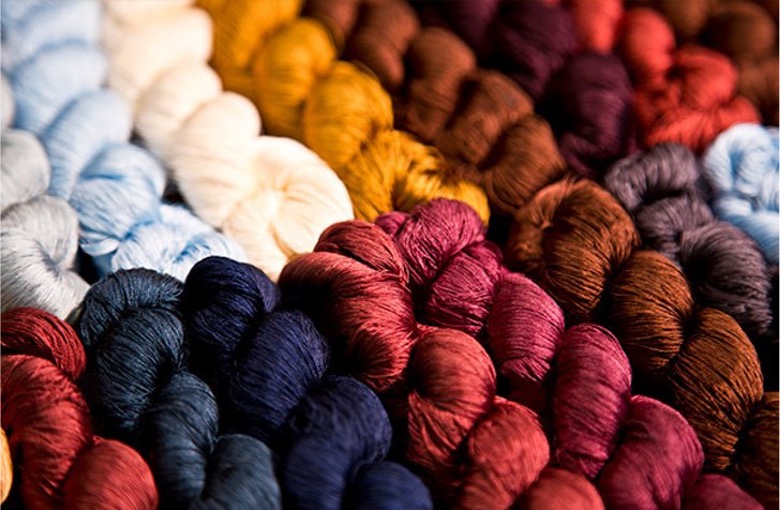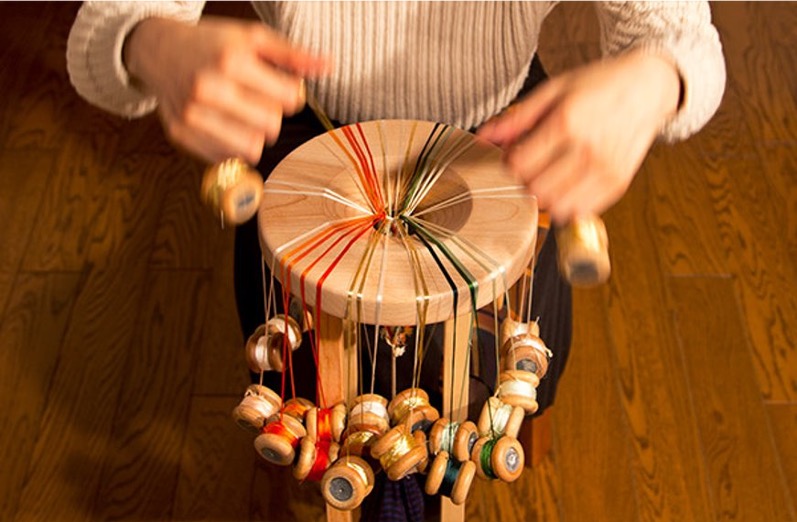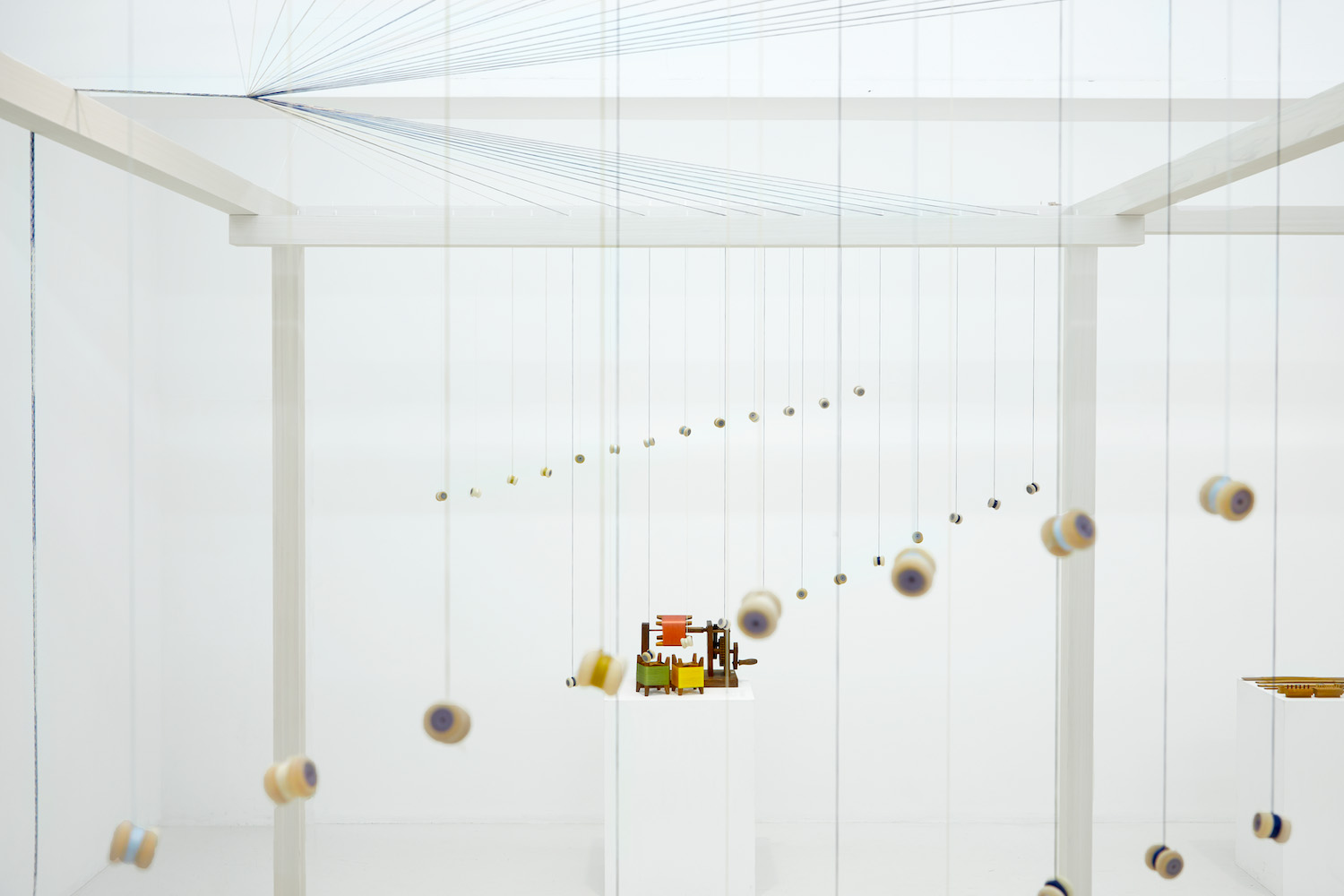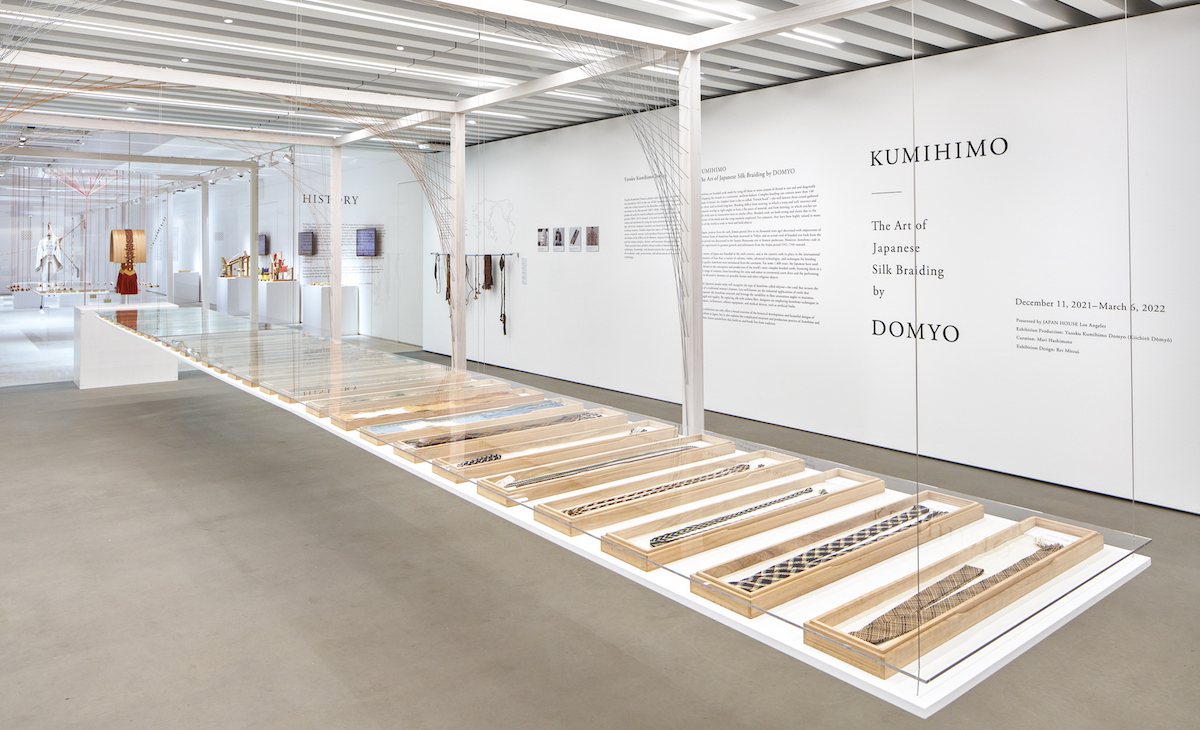
Part 2 | The Structure of Kumihimo
The second section of the exhibition, which occupies a large area of the main gallery, focuses on the structure of kumihimo braiding. The most important tools in kumihimo are the wooden braiding stands, frames over which the strands of thread are laid during braiding. Large-scale marudai (“round stands”) and takadai (“tall stands”) strung with colorful silk strands and bobbins evoke the process of silk braiding. Videos, photographs, silk samples, and tools help visitors to learn about the structure of kumihimo braiding.
Aspects of the Kumihimo Process

Silk Dyeing
Dyeing the silk yarn is the first step in making kumihimo. Each strand of thread is dyed one color at a time by Domyo craftspeople, allowing for depth of color and a rainbow of different combinations.

Braiding
Braiding is achieved by diagonally overlapping a set of silk threads that are tied off at one end and passed through the central hole in a round stand, or marudai, or the center of a tall, rectangular stand, or takadai. The threads are separated into groups of strands, each with a wooden bobbin attached to the end. Depending on the patterns and colors being used, the groups of strands are passed across, over, and around each other until a snake-like silken cord emerges from the underside of the stand. The constant rhythm and hand movements have a meditative quality and result in a homogenous braided cord.

Photo by Yasuhide Kuge
Shapes, Styles and Patterns
There are hundreds of ways to braid kumihimo, but there are two main styles: the wide, flat hiragumi style, braided using a takadai, and the rounder kakugumi style with a thicker cross section made with a marudai. The delicacy of the final product depends on the temochi (the number of strands of threads attached to each bobbin) and the quantity and size of the bobbins. By increasing the temochi and reducing the bobbin amount, braiding can be performed more quickly, but the finished cord will be larger and less refined — and vice versa. The patterns and designs braided into the cords are created by changing the number of colors and the garaoki, the order in which the threads are arranged.


